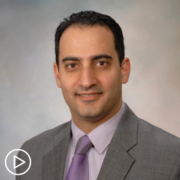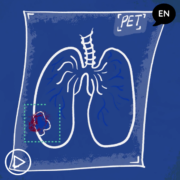Monitoring for an Endometrial Cancer Recurrence
Monitoring for an Endometrial Cancer Recurrence from Patient Empowerment Network on Vimeo.
How are endometrial cancer patients monitored for a recurrence? Expert Dr. Emily Ko shares insight about how monitoring is tailored to a patient’s individual disease and discusses the frequency of observation.
Related Programs:

|

|

|
Transcript:
Katherine:
How are patients monitored for a recurrence, and are there approaches to help prevent a recurrence?
Dr. Ko:
Sure, absolutely. Great question. It is important to continue monitoring patients, even after they’ve gone through treatment. So, I think of it as a multifaceted approach. Usually, it includes office visits, including a physical exam. It includes a thorough intake of all of their symptoms.
It also includes – depending on the scenario – in some circumstances, regular imaging studies, such as a CT scan or MRI, and sometimes, we also do things like PET scans, and I think that does have to be tailored to the unique patient’s endometrial cancer, unique case, stage, histology, and we kind of tailor which tests we choose to do. The interval of monitoring can vary, so I would say generally speaking, it could be anywhere from three- to six-month visits, and with potentially added scans, as we talked about, and sometimes, we also do certain blood tests in certain cases where we may choose to follow a CA125 blood tumor marker.
But, I would say that there are different, definitely variants to how we choose to monitor, and there are certain resources we tend to use, such as the NCCN guidelines that providers may reference, and sometimes may even share with the patients to explain why and how we choose to do the monitoring.










